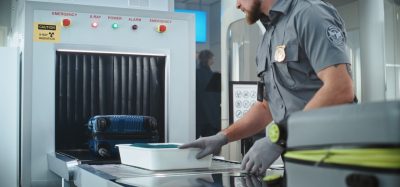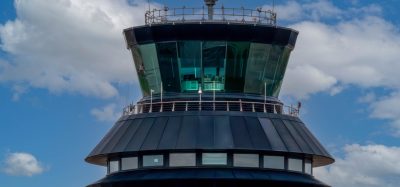Transforming global ATM performance
Posted: 13 December 2014 | Jeff Poole | No comments yet
Jeff Poole, CANSO Director General, outlines some of CANSO’s priorities and the steps the industry is taking towards achieving seamless airspace globally


The world’s air navigation service providers (ANSPs) handled 36.3 million flights in 2013 and this figure is set to increase by over five per cent per year going forward. With increasing threats of congestion and complexity, we must ensure the appropriate infrastructure is built on the ground and in the air to cater for this increasing demand. How can we achieve this? What technologies will help us? What is CANSO doing to achieve its goal of seamless airspace globally? And what do we want each State of America to do to ensure this happens?
Vision 2020
CANSO and its members seek to transform global ATM performance. This is why we launched Vision 2020, the first-ever strategic framework for the ATM industry. Its objective is to transform global ATM performance to enable airlines to fly in seamless airspace globally across ‘invisible’ borders.
The 126 deliverables in the associated CANSO Work Plan are aligned with the ICAO Global Air Navigation Plan and its Aviation System Block Upgrades (ASBU). These are a vital catalyst for transforming global ATM performance. CANSO made a significant contribution to the development of the methodology of the ASBUs. We are now focusing on ASBU implementation with seminars for States, ANSPs and other stakeholders; a guide on implementing the block modules; and a training programme. The CANSO Needs and Dependency Analysis will assist States in the establishment of priorities and targets for ASBU implementation.
An important step towards achieving seamless airspace globally is to break down the barriers to effective regional traffic flows and there are two areas that need attention. First, we are working to harmonise the procedures and situational awareness associated with crossing flight information region (FIR) boundaries. Currently, aircraft have to cope with differences in technologies, procedures, standards, measurement, and communications when crossing from one FIR to another, leading to potential safety issues and operational challenges.
Secondly, we look to States to work with each other to break down the current barriers to global harmonisation, in particular with responsible and effective use of sovereignty; and flexible use of airspace between civil and military stakeholders.
Technology
Operational improvements are dependent on the latest technologies and CANSO’s Associate Members drive many of the technological advances in our industry. Our industry is undergoing significant technological change. Old technologies are being phased out and the next generation of ATM systems are going digital. They are moving to IP-based networks and will increasingly be space-based, such as the Aireon venture. Many ANSPs have to integrate new technologies and applications with current or previous generation systems, while some will be able to ‘leapfrog’ to new technologies with the proper investment in systems and training.
Information management is a major ‘game-changer’ for the industry. At the moment we are limited in sharing real-time information because the various technical platforms do not speak to each other. Open system concepts, such as SWIM (system wide information management), based on digital information management and IP-based networks, will result in the creation of a collaborative net-centric environment that will involve multiple stakeholders in ATM. We will be able to provide the right information, at the right time, anywhere to the user or system that needs it.
Data communications have revolutionised the way we manage airspace, enabling: more efficient ATM operations; safely increasing airspace capacity and reducing separations; and reducing voice congestion by transferring voice communications to data. ATM produces a vast amount of data including radar data, flight data processing (FDP) system data, controller input, and system logs. This ‘Big Data’ represents a big opportunity for ATM. It helps ANSPs identify trends and patterns; prevent problems from worsening; and monitor the performance of ATM systems.
Technology is an enabler but the key is how we use and leverage that technology and this is where partnership is vital. If all stakeholders do not agree with and cooperate on changes, they are unlikely to happen. For example, the technology is available to turn the Single European Sky into reality but it is no longer a technological issue, it is one of political will to drive positive change. So technology needs to be harnessed with partnership and effective advocacy.
Safety
Safety is our number one priority and the raison d’être of each ANSP is the safe separation of aircraft. We are actively engaged with ICAO and our industry partners to improve safety. The CANSO Runway Safety Programme focuses on reducing unstable approaches and improving runway safety through seminars and a toolkit with guidance for controllers and pilots. We have made a significant contribution to the development of safety management practices through seminars, workshops and our annual Safety Conference as well as through the CANSO SMS Standard of Excellence and its implementation guide. We are focused on safety performance measurement and the development of safety metrics.
We believe that an appropriate and robust ‘just’ safety culture is one of the best ways to ensure high levels of safety that encourages learning from events and accident precursors and to prevent them from turning into accidents. Our workforce needs to feel comfortable with filing reports on what happens at work, without fear of reprisals.
Cybersecurity
Since ATM is dependent on technology and information exchange, a growing threat to safety and security lies in cyber attacks. ATM systems are exposed, particularly in a net-centric environment, unless we come up with appropriate measures to detect, respond to and recover from cybersecurity events. We need to respond together with a common vision, strategy, goals, standards, and policies.
While each industry must develop appropriate response mechanisms or processes, we also need to look at where coordinated action should take place with an aviation system-wide approach to cyber security. We therefore support the initiative of the Industry High-level Group with ICAO to develop collaborative approaches to addressing cybersecurity in aviation. For its part, CANSO recently launched the comprehensive ‘CANSO Cyber Security and Risk Assessment Guide’ for the ATM industry.
Better regulation
I have discussed some of the steps we are taking to achieve safe, efficient and harmonised airspace. But we can only go so far before we come up against political, regulatory and governance constraints that only States can address. The industry is often faced with prescriptive, inefficient and conflicting regulations that add cost and undermine the ability to innovate and perform effectively. We need a harmonised and consistent approach to regulation in ATM globally.
CANSO is calling for regulatory approaches that emphasise what must actually be achieved, focusing on agreed, measurable outcomes and placing more of the responsibility and accountability with the service provider in how the performance requirements will be met. However, there is no ‘one size fits all’ solution for ATM regulation as there is a great disparity among States in terms of oversight capabilities, maturity and culture.
So we prefer to see an incremental approach. For States with a well-established (albeit prescriptive) regulatory regime, we encourage the move to performance-based regulation and the adoption of ‘Better Regulation Principles’. For States that need to improve their oversight capabilities, we should first support the implementation of capacity building initiatives that are both innovative and effective.
We still have much to do but I am optimistic that Vision 2020 and the steps laid out in the ASBUs provide the industry with a clear and effective road map to transform global ATM performance. With the support of our industry partners and the commitment of States we can make it happen.
The key principles of Better Regulation
CANSO is asking States to adopt five key principles of better regulation:
- Proportionate: Regulators should only intervene when necessary. Remedies should be appropriate to the risk posed, and costs identified and minimised
- Accountable: Regulators must be able to justify decisions, and be subject to public scrutiny
- Consistent: Government rules and standards must be consistent and coordinated and implemented fairly
- Transparent: Regulators should be open, and keep regulations simple and user-friendly
- Targeted: Regulation should be focused on the problem, and minimise side effects.
Join our free webinar: Transforming Airport Security – Innovation, Impact, and the Passenger Experience
The landscape of airport security is undergoing a profound transformation, driven by evolving threats, technology, and passenger expectations. This webinar focuses on how AtkinsRéalis has been transforming security processes at some of the world’s busiest airports with smarter, more adaptive solutions.
Date: 4 Nov | Time: 14:00 GMT
REGISTER NOW TO SECURE YOUR SPOT
Can’t attend live? No worries – register to receive the recording post-event.
Issue
Related topics
Air traffic control/management (ATC/ATM), Big data, Cyber-security, Safety
Related organisations
CANSO (Civil Air Navigation Service Organisation), International Civil Aviation Organization (ICAO)


















